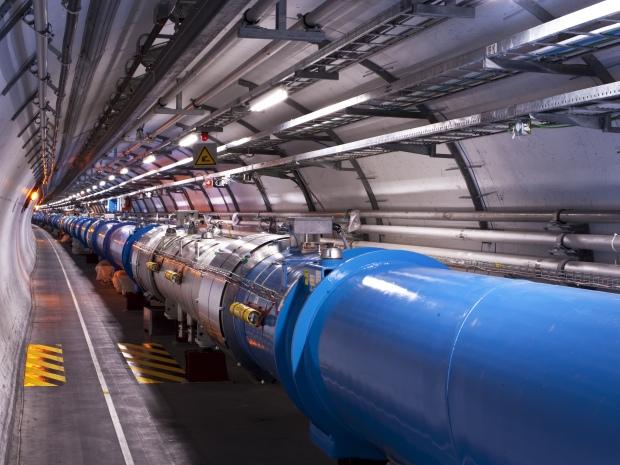The Higgs boson: Why should we care?

Well, the Higgs boson is predicted by the Standard Model of particle physics. This model explains the physics of the atom and the nucleus. Lots of weird little zippy particles (quarks and Z particles, for instance) predicted by the model have been found, which made it seem reasonably reliable.

Another reason for CERN's celebrations is that it was hard to find. That's because it is so big. For a particle.
Thanks to Einstein, we know that mass and energy are the same thing, and the Higgs is a very high-energy particle indeed. It was, in fact, lurking somewhere between 125GeV and 126GeV on the energy spectrum. Top quarks are very massive particles, clocking in at 172GeV — around the same as an atom of Tungsten. By contrast, the humble photon has an energy of the order of a single electron volt, effectively having zero mass.
Large particles are unstable, decaying quickly into smaller particles. This means that any naturally occurring Higgs bosons would have decayed long, long ago, before there even were galaxies to be far, far away.
It also means that it is not the Higgs itself that physicists are looking for, but the products of its decay. In the case of the top quark, these smaller particles are mostly the bottom quark, but also the strange and down quarks. The Higgs boson should decay almost immediately into some combination of electrons and hadrons, and it is these energetic traces that scientists went looking for.
A very energetic explosion
To find something so big, particle physicists needed to make a very energetic explosion. So they built the Large Hadron Collider at CERN. This is a monumentally powerful particle accelerator, capable of creating the kinds of collisions between proton beams that might just produce a few stray Higgs bosons, which would then decay in a tell-tale way.
What does the Higgs boson do? Mostly, it provides evidence of the Higgs field. This was an idea put forward by Professor Peter Higgs to explain why matter has mass. Conceptually, it is like a sticky gluey jelly that permeates the whole of the universe. The strength of a particle's interaction with the Higgs field determines its mass.
All elementary particles are either bosons or fermions. A fermion is something like an electron, and is generally associated with matter. A boson, in general, is a force-carrying particle that mediates a field. (In my nuclear physics classes, fermions were described to me as being like tigers [I confess, I have forgotten why], while bosons were like cattle, always being in a field. Har har.) For example, photons are the force carriers that mediate the electromagnetic field.
So a Higgs boson is the force-carrying particle, or smallest excitation possible, of the Higgs field. Find it, and we prove the existence of the Higgs field, and thus the completeness (almost) of the standard model of physics.
Beyond this, it gets trickier. The trouble with answering the 'Why we should care?' question is that the reason we should care is almost as inexplicable as the physics itself. It confirms the standard model. It means we don't have to go back to the drawing board and start again.
The impact of the discovery for the Average Joe is not going to be huge. It is massive for physics, because it is an extra fact. And there is nothing scientists like more than an extra fact.